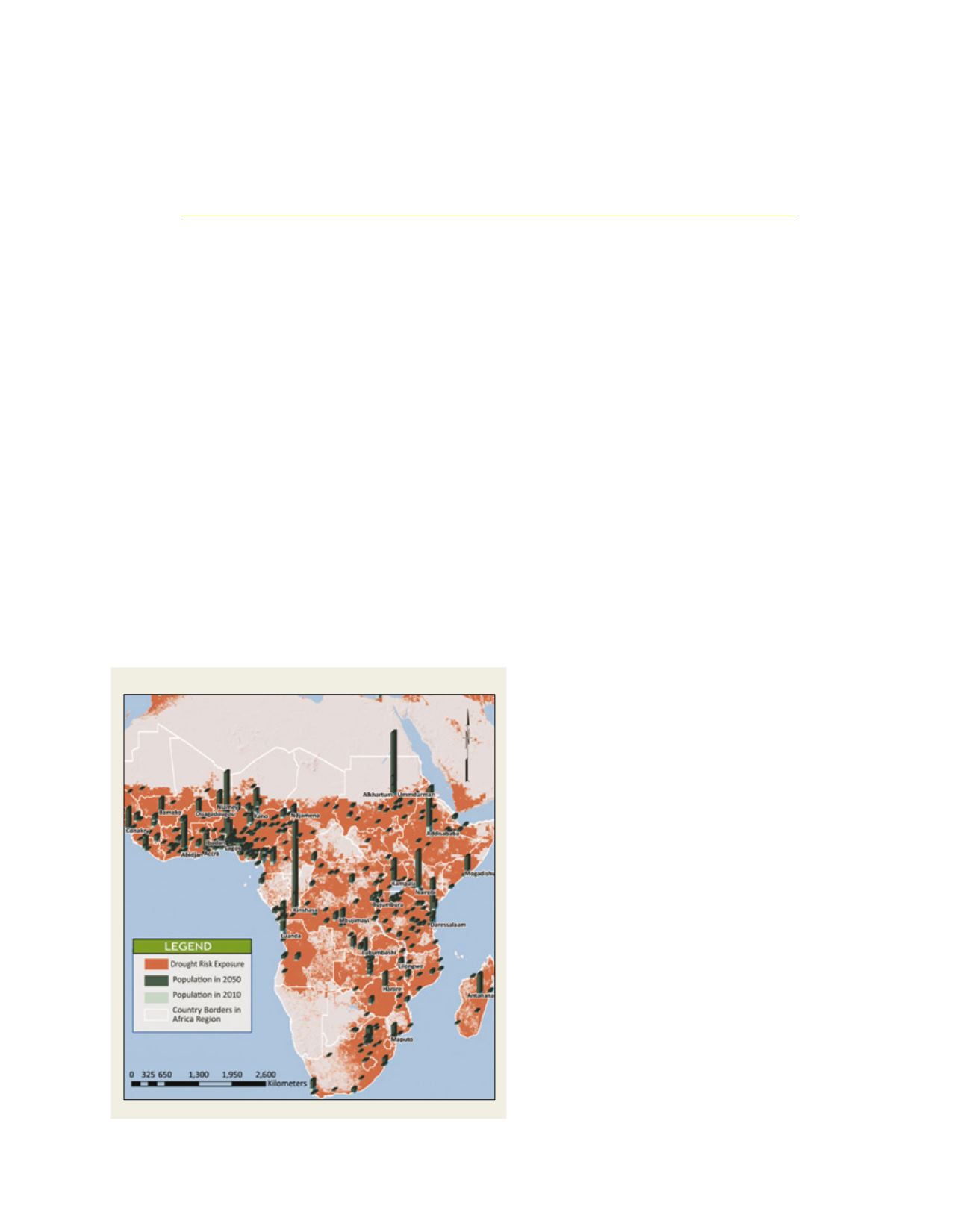

[
] 279
Integrated urban water frameworks for
emerging cities in sub-Saharan Africa
Kala Vairavamoorthy, Seneshaw Tsegaye and Jochen Eckart,
Patel College of Global Sustainability, University of South Florida, USA
I
t is widely accepted that one of the major challenges of the
twenty-first century is to provide safe drinking water and
basic sanitation for all. Presently, more than 1 billion people
lack access to improved water sources, and over 2.6 billion
people lack access to basic sanitation – and nearly all of these
people live in developing countries. In sub-Saharan Africa, water
supply coverage is around 61 per cent and access to improved
sanitation around 30 per cent.
1
Providing adequate water supply and sanitation, particularly in
urban areas, is a challenging task for governments throughout the
world. Already, half of the world’s population lives in cities, most
of which have inadequate infrastructure and resources to address
water and wastewater management in an efficient and sustain-
able way. This task is made even more difficult due to predicted
dramatic global changes. For example, climate change is predicted
to cause significant changes in precipitation patterns
and their variability, affecting the availability of water;
technological and financial constraints present chal-
lenges in maintaining and upgrading infrastructure
assets to deliver water to all sectors while maintaining
the quality of water distributed to the various users;
and population growth, urbanization and industrial
activities are leading to a dramatic increase in water
consumption and wastewater discharge.
Under the aforementioned circumstances, current
models of urban water management and their corre-
sponding infrastructure have already failed or are
on the verge of collapse from the perspective of cost
effectiveness, performance and sustainability. Hence,
urbanizing areas are now faced with difficult future
strategic decisions – do they continue business as
usual following a conventional technical, institutional
and economic approach for water and sanitation? Or
do they look for a new paradigm?
Sub-Saharan Africa is urbanizing faster than any other
continent, and most of this urbanization is taking place
in emerging towns and villages.
2
These areas have a
unique, but fleeting opportunity to change the way they
think about water and how they develop their infrastruc-
ture. Further, these emerging urban areas often do not
have mature infrastructure and governance structures.
These conditions create an opportunity to implement
radically different urban water systems based on the
key principles of integrated urban water management
(IUWM). IUWM principles include: resilience of urban
water systems to global change pressures; interventions
over the entire urban water cycle; reconsideration of the
way water is used (and reused); and greater application
of natural systems for water and wastewater treatment.
Critical to the implementation of IUWM principles is
the early and continuous integration of all stakehold-
ers in the decision-making and implementation process.
Furthermore, institutional and governance changes are
required to promote a more integrated approach to
urban water management. Current trends suggest that
future water systems will shift from being linear (open
loop) centralized systems to closed loop, semi-central-
ized systems that maximize opportunities for water
reuse and recycling, and the generation of energy and
nutrients from used water.
E
conomic
D
evelopment
and
W
ater
Current and future population in African cities exposed to drought
Source: World Bank, 2012


















